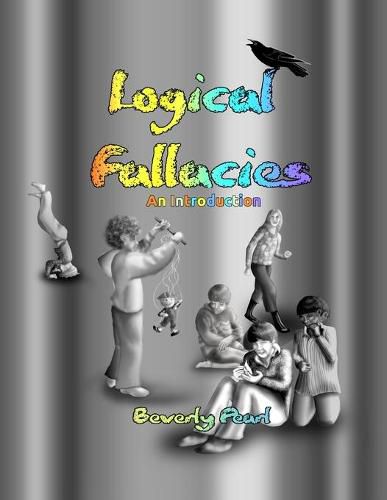Readings Newsletter
Become a Readings Member to make your shopping experience even easier.
Sign in or sign up for free!
You’re not far away from qualifying for FREE standard shipping within Australia
You’ve qualified for FREE standard shipping within Australia
The cart is loading…






This title is printed to order. This book may have been self-published. If so, we cannot guarantee the quality of the content. In the main most books will have gone through the editing process however some may not. We therefore suggest that you be aware of this before ordering this book. If in doubt check either the author or publisher’s details as we are unable to accept any returns unless they are faulty. Please contact us if you have any questions.
Danny finds an abandoned baby crow and takes care of it. The crow, now attached to Danny, follows him to school every day. The other students jokingly refer to the crow as "Danny's Dog". Logical Fallacies begin to unfold when a bully pushes Danny down. Through a variety of logically fallacious exchanges, Danny is blamed and punished for starting the fight. During a second encounter with the bully, "Danny's Dog" catches the attention of a teacher with his loud cawing, in time for her to see the lie unfold. The teacher decides to teach the children about what logical fallacies are and how to spot them. The story is presented as a poem that shares the experiences of the fictional Grove St. School children as they learn about logical fallacies. Illustrations include speech bubbles representing some of the fallacies as they may manifest among school children. The same fallacious discussion and bullying that is found in the school yard can often be found within upper management and around board room tables. It is hoped that introducing these concepts early will help contribute to the emotional intelligence of children and ultimately a more enlightened leadership in governments and organizations. If we form good strategic thought patterns earlier in life, our decisions may be more likely to be based on evidence rather than slick manipulation, bullying and personal agendas. Future managers, politicians and directors may have richer, more meaningful discussions if decisions are based on evidence. A knowledgeable population might not be easy to gaslight if they are empowered to trust their own instincts, acknowledge nuance and think for themselves. This book was inspired by a need for understanding of what logical fallacies are and how to spot them. While intended for use in the classroom, it is hoped the it will also be beneficial for adult readers.
$9.00 standard shipping within Australia
FREE standard shipping within Australia for orders over $100.00
Express & International shipping calculated at checkout
This title is printed to order. This book may have been self-published. If so, we cannot guarantee the quality of the content. In the main most books will have gone through the editing process however some may not. We therefore suggest that you be aware of this before ordering this book. If in doubt check either the author or publisher’s details as we are unable to accept any returns unless they are faulty. Please contact us if you have any questions.
Danny finds an abandoned baby crow and takes care of it. The crow, now attached to Danny, follows him to school every day. The other students jokingly refer to the crow as "Danny's Dog". Logical Fallacies begin to unfold when a bully pushes Danny down. Through a variety of logically fallacious exchanges, Danny is blamed and punished for starting the fight. During a second encounter with the bully, "Danny's Dog" catches the attention of a teacher with his loud cawing, in time for her to see the lie unfold. The teacher decides to teach the children about what logical fallacies are and how to spot them. The story is presented as a poem that shares the experiences of the fictional Grove St. School children as they learn about logical fallacies. Illustrations include speech bubbles representing some of the fallacies as they may manifest among school children. The same fallacious discussion and bullying that is found in the school yard can often be found within upper management and around board room tables. It is hoped that introducing these concepts early will help contribute to the emotional intelligence of children and ultimately a more enlightened leadership in governments and organizations. If we form good strategic thought patterns earlier in life, our decisions may be more likely to be based on evidence rather than slick manipulation, bullying and personal agendas. Future managers, politicians and directors may have richer, more meaningful discussions if decisions are based on evidence. A knowledgeable population might not be easy to gaslight if they are empowered to trust their own instincts, acknowledge nuance and think for themselves. This book was inspired by a need for understanding of what logical fallacies are and how to spot them. While intended for use in the classroom, it is hoped the it will also be beneficial for adult readers.